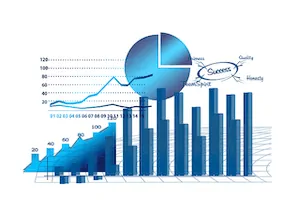Brands labeled as having a Green Supply Chain have started becoming synonymous with sustainability, trustworthiness, quality and forward thinking.
For this very reason, companies globally are frantically climbing to the tallest of buildings to shout out their dedication to supply chain sustainability, and describe the sustainable actions that will follow ‘according to their 2020 initiatives’.
I don’t mean to come off snarky, but there is a clear-cut discourse that has formed between brands actualizing supply chain sustainability, and those who are marketing supply chain sustainability.
“The concept of GSCM (Green Supply Chain Management) is to integrate environmental thinking into supply chain management (SCM)” (Chin 2015).
Using environmental and social initiatives to enhance a brand’s value doesn’t warrant a green labeling. A truly green supply chain is a supply chain that implements strategies and actions to improve performance in areas-otherwise damning to people, planet and profit.
The Branded Supply Chain
To understand the discourse between green supply chains and the imposters, one must first delve into the ideology of branded supply chains.
Genius really.
What’s the easiest way to ensure that a potential consumer feels inclusion, intimacy and loyalty to your brand and products?
Simple… Bring the brand and product as close to the consumer as possible, and make them feel damn good about it.
“The Branded Supply Chain is the model for ensuring that your brand is more than just a collection of ideas, logos and guidelines. Branding your supply chain means using your supply chain as a vehicle for your brand story to inspire loyalty and secure profits in the long term” (Mee 2015).

A well-branded supply chain can, too, become a green supply chain. But, profiling a brand as sustainable or responsible before actually completing actions for sustainable development is just brand self-actualization. Self actualizing brand or green washing a brand isn’t active supply chain sustainability.
It’s just one big marketing stunt.
Green Supply Chain Branding done right
Campbell’s soup is a company, and brand, that has navigated these kind of tricky waters with finesse and skill.
“The Campbell Soup Company’s aggressive waste reduction initiatives are doing as much for the brand as they are for Campbell’s bottom line. Campbell saved $4.5m just by reducing packaging sizes and the company recycles up to 85 per cent of its waste. Meanwhile, the story you cannot help but share is that Campbell’s production plants are powered by (waste) soup!” (Mee 2015).
In this instance, Campbell’s was able to impact their bottom-line, while increasing top-line revenue, and brand value. The reciprocal nature of their supply chain and marketing efforts strengthened their brand, and was a win for both functions.
Supply chains are important extensions of a company’s added value to consumers. Marketing a sustainable supply chain-win isn’t green washing, as long as the environment and consumers aren’t on the losing side…
Truth be told
Developing a green supply chain requires holistic, structural and methodological shifts in any and all supply chain strategies and/or actions.
Top-to-bottom consensus has to be initiated in order to develop true sustainable development.
One of the elements of SCM that holds a lot of weight in the outcome of a green supply chain is procurement and sourcing methods. Procurement is a function that often creates a direct link between buyer and supplier.
A recent report by CDP, delved into sustainable supply chain practices of 58 corporate giants that have taken measures over the last few years to create green supply chains. There was very hopefully statistics in the report, such as; $14B has been collectively saved due to the reduction of carbon emissions within the 58 organizations.
Green procurement was a highlighted element of the report, and while responsible and sustainable procurement has become a growing concern of these companies, their suppliers aren’t exactly as enthusiastic.
“Just 23% of supplier respondents are in turn engaging with their own suppliers to reduce emissions, suggesting that many may be missing out on business opportunities and financial savings, the report states” (Hermes 2018).
As stated, green supply chains require a holistic approach. This means, engaging and educating suppliers of sustainability initiatives and goals, so they can engage and educate second and/or third-tier suppliers. Without full supplier compliance, at all levels, actualizing green supply chain initiatives is next to impossible.
And, this isn’t just an opinion.
In the same report by CDP, it was revealed that the 58 corporate giants believe that more than 4X the emissions located in their supply chain reports are released into the environment via second-party actors, third-party and traders (cdp.net 2018).
Some global brands have sought out alternative solutions to these kinds of uncontrollable circumstances, occurring in the unseen depths of supply chains. In some cases, direct competitors have been seen to work together — within coalitions — in order to weed out disingenuous/non-green supplier bodies.
In 2015, representatives from “Apple, Microsoft, Huawei, Panasonic, Hitachi, Samsung, Canon, Toshiba and Ericsson participated in an IPE roundtable conference, where they shared their management experiences and explored industry solutions” (Hower 2015). The Sustainable Apparel Coalition is another example of collaborative efforts by industry leaders to optimize supply chain transparency, quality, and sustainability within the textile industry.
While this is all kittens and cookies, there remain structural confines within the corporate sustainable development of procurement and sourcing.
What could it possibly be?
Well, let’s see. We’re talking about private, for-profit, corporations….
Regardless of efforts made, to accomplish green supply chain status, cost is still the top concern of procurement professionals. Pressure on cost-reduction and overall spend will always be an overbearing concern placed upon procurement teams by their shareholders, and owners. For this reason, innovative solutions are required to drive development without sacrificing profit, or creating negative impact on people or planet.
Final Thoughts
Creating a green supply chain is a process, requiring an organizational consensus and a central focus/vision.
Efforts put towards sustainable development should serve as a means of creating profit, in parallel to positive environmental and social impact.
Then, and only then, should a company utilize sustainability as a platform for their supply chain’s brand and marketing to stand on!


One thought on “The Green Supply Chain: True Sustainability or Just a Marketing Stunt?”
Comments are closed.